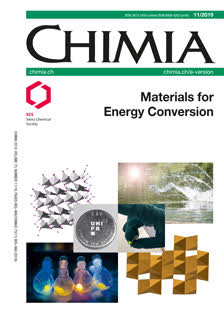Surface Modifications of Positive-Electrode Materials for Lithium Ion Batteries
DOI:
https://doi.org/10.2533/chimia.2019.880PMID:
31753069Keywords:
Cycling stability, Li-ion batteries, Positive electrodes, Surface coating, Tailoring surface propertiesAbstract
Lithium ion batteries are typically based on one of three positive-electrode materials, namely layered oxides, olivine- and spinel-type materials. The structure of any of them is 'resistant' to electrochemical cycling, and thus, often requires modification/post-treatment to improve a certain property, for example, structural stability, ionic and/or electronic conductivity. This review provides an overview of different examples of coatings and surface modifications used for the positive-electrode materials as well as various characterization techniques often chosen to confirm/detect the introduced changes. It also assesses the electrochemical success of the surface-modified positive-electrode materials, thereby highlighting remaining challenges and pitfalls.Downloads
Published
2019-11-01
Issue
Section
Scientific Articles
License
Copyright (c) 2019 Swiss Chemical Society

This work is licensed under a Creative Commons Attribution-NonCommercial 4.0 International License.
How to Cite
[1]
N. H. Kwon, J. Conder, M. Srout, K. M. Fromm, Chimia 2019, 73, 880, DOI: 10.2533/chimia.2019.880.







